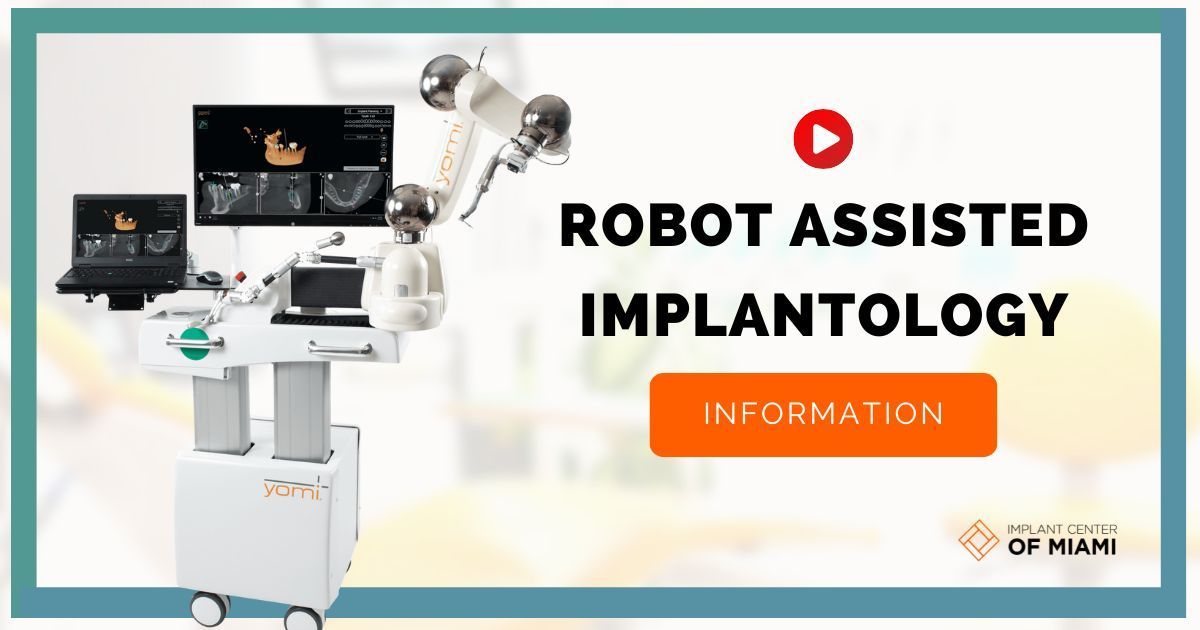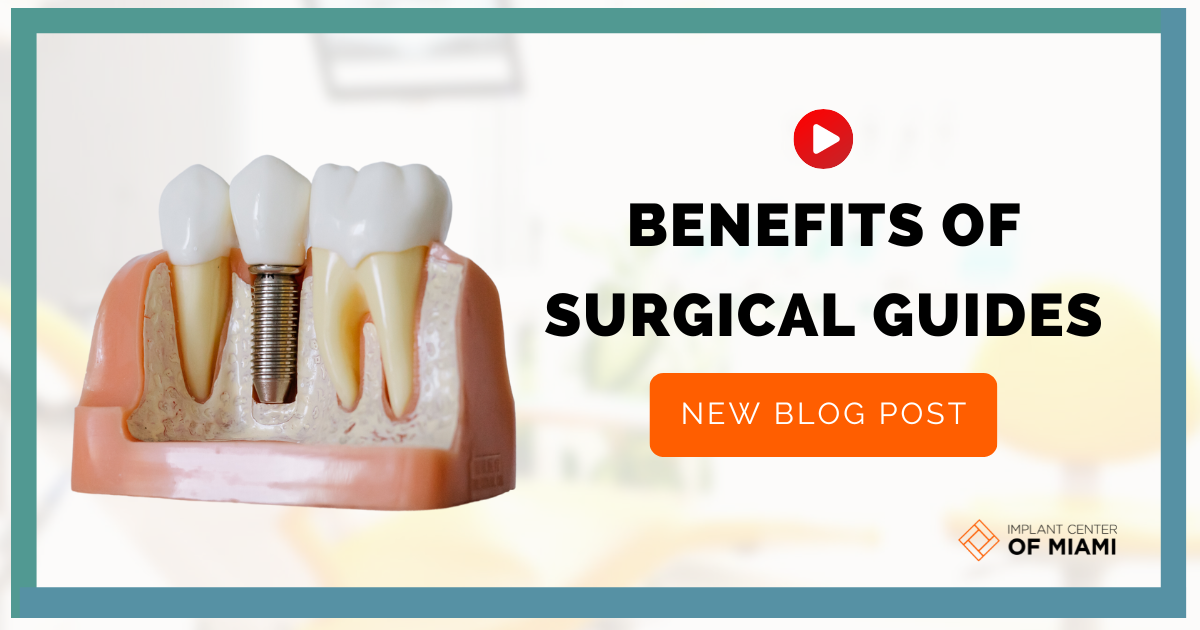Understanding the Precision and Efficiency of Guided Dental Implant Surgery Procedures
Guided implant surgery is a modern, cutting-edge technique in dentistry that provides precise and efficient solutions for dental implant placement. It involves the use of computer-aided technology to create a virtual model of a patient's mouth, which is then utilized to guide the process of implant surgery. This innovative approach has made dental implant procedures more predictable and accurate, significantly reducing the chances of post-operative complications. It is especially beneficial for complex cases, as it offers unparalleled precision in identifying the optimal placement of the implant.
Request an Appointment
Understanding the Basics of Guided Implant Surgery
Guided implant surgery utilizes cutting-edge 3D imaging to plan and execute precise dental implant placements. This method increases safety and efficiency, enhancing the chances for successful outcomes. By using a patient-specific surgical guide, doctors visualize the procedure beforehand, reducing potential risks.
The Importance of Guided Implant Surgery in Prosthodontics
Guided implant surgery in prosthodontics enhances precision, safety, and predictability in dental implants. It allows for detailed preoperative planning, minimizes surgical risks, and reduces recovery time. Primarily, it ensures the accurate placement of the implant for better patient outcome and prosthetic longevity.
The Role of 3D Imaging and Technology in Guided Implant Surgery
3D imaging and technology have revolutionized guided implant surgery. Through advanced 3D scans, oral surgeons can visualize precise implant placement, preventing surgical complications. It enhances accuracy, reduces operation time, and improves patient outcomes.
Steps Involved in the Guided Implant Surgery Procedure
Guided implant surgery utilizes advanced technology for precise dental implant placement. This 3-step procedure involves scanning the patient's oral structure using 3D imaging. The image is used to create a virtual model for planning the implant surgery. A surgical guide, customized as per the model, assists with the precise placement of the implant in the final step.
Benefits of Guided Implant Surgery Over Traditional Methods
Guided implant surgery offers numerous benefits over traditional methods. It provides precision, less pain, and quick recovery. The procedure utilizes 3D mapping which increases accuracy, thereby reducing risks. Patients also experience less post-operational discomfort, leading to improved patient satisfaction.
Preparations for Undergoing Guided Implant Surgery
Guided implant surgery involves precise planning to ensure successful results. Preparations include a detailed dental and medical history, 3D imaging scans to create a surgical guide, and consultations with your surgeon about the procedure. Good oral hygiene and ceasing habits like smoking are essential for optimal recovery post-surgery.
Analyzing the Accuracy and Precision of Guided Implant Surgery
Guided implant surgery provides enhanced accuracy and precision in dental procedures, using 3D imaging and planning software for precise placements. Its accuracy and precision are pivotal, reducing complications and improving patient outcomes. Regularly analyzing these aspects helps in ensuring the best surgical results.
The Use of Surgical Guides in Implant Placement
Surgical guides in implant placement improve accuracy, precision, and safety. They help surgeons determine the ideal location, angle, and depth for the implant, reducing surgical errors and patient trauma. This modern approach enhances outcomes and speeds recovery.
Post-Operative Care and Maintenance After Guided Implant Surgery
Post-operative care after guided implant surgery is crucial in ensuring healthy recovery. This includes routines like gentle oral hygiene practices, use of prescribed medications to manage pain, and adherence to specific dietary guidelines. Regular follow-ups for check-ups and removal of sutures aid in monitoring healing progress. By upholding these recommendations, patients can avoid complications and ensure longevity of their implants.
Overcoming Challenges and Complications in Guided Implant Surgery
Overcoming challenges in guided implant surgery involves precise planning and execution. The use of accurate imaging technology, such as CT or Cone Beam scans, helps identify the optimal implant placement to avoid complications. Skilled surgeons employ customized guides, enhance their surgical techniques, and use advanced tools to ensure a successful procedure. Good aftercare reduces the risk of post-operative issues, fostering swift recovery.
How to Choose the Right Dentist for Guided Implant Surgery
Choosing the right dentist for guided implant surgery requires research. Start by examining the dentist's experience and training specific to implant surgery. Check online reviews and ask for referrals to gauge patient satisfaction. Certifications from authoritative dental institutions can validate their professionalism. Lastly, ensure they utilize up-to-date technology and offer comprehensive care plans.
The Impact of Guided Implant Surgery on Patient Comfort and Satisfaction
Guided implant surgery significantly enhances patient comfort and satisfaction. It ensures precise implant placement, decreasing operative time and post-surgical discomfort. This high level of accuracy leads to fewer complications, increasing patient satisfaction.
The Role of Guided Implant Surgery in Preserving Dental Anatomy
Guided Implant Surgery provides a convenient, accurate way to maintain dental anatomy. By using 3D imaging technology and personalized surgical guides, dentists can place implants with precise alignments, preserving bone structure and gum tissue. This method reduces complications, ensures a natural appearance, and enhances the longevity of the implant.
The Influence of Bone Density and Quality on Guided Implant Surgery
Bone density and quality significantly influence guided implant surgery outcomes. Dense, high-quality bones offer sturdy support for implants, leading to increased stability, better osseointegration, and successful surgical outcomes. Conversely, low-density or poor-quality bones may pose challenges such as implant failure. Therefore, pre-surgical evaluations of bone density and quality are vital for planning and executing successful implant surgeries.
Case Studies and Success Stories of Guided Implant Surgery
Guided Implant Surgery uses advanced technologies for precise dental implant placement, resulting in successful outcomes. It offers high accuracy, reducing post-surgical complications. Many case studies and success stories reflect its effectiveness in enhancing patient comfort, reducing surgery time, and improving overall dental health.
The Future of Guided Implant Surgery: Developments and Innovations
The future of guided implant surgery holds exciting innovations. Developments like robotic-assistance, real-time imaging, and 3D-printed surgical guides are drastically enhancing precision and predictability. These advancements not only maximize surgical success rate but also minimize patient recovery time, projecting a transformative future for implantology.
A Comparative Study: Guided Implant Surgery Vs Traditional Implant Surgery
In dentistry, Guided Implant Surgery employs 3D models for precise implant placement, reducing risk and enhancing outcomes. Traditional Implant Surgery relies on the clinician's experience and interpretation, which can lead to greater uncertainty. Comparatively, guided techniques provide more predictable results.
Understanding CAD/CAM Technology in Guided Implant Surgery
CAD/CAM technology in guided implant surgery enables precise planning and execution. It uses digital scans and 3D models to create surgical guides, ensuring accurate implant placement. It reduces risks, improves outcomes, and promotes patient recovery.
Cost-effectiveness and Affordability of Guided Implant Surgery
Guided implant surgery is a sophisticated dental procedure that increases accuracy and patient safety. Despite its higher initial cost, it is cost-effective in the long run due to its predictability, shortened recovery times, and reduced risk of complications. Affordability may vary, yet many find the benefits justify the expense.
Training and Educational Resources for Professionals in Guided Implant Surgery
Guided implant surgery is a critical specialization in dentistry, wherein professionals utilize advanced digital technology for precise dental implant placement. It requires extensive training and continuous education. Educational resources range from hands-on workshops to comprehensive digital learning platforms offering theoretical knowledge, practice on 3D models and patient cases. Learning is further enhanced through interactive webinars and symposiums featuring industry experts.
Synthesizing the Journey: The Comprehensive Review on Guided Implant Surgery
Guided implant surgery utilizes advanced technology for precise dental implant planning and placement. Combining diagnostic imaging and computerized simulations, it aids in the visualization of the anatomical structures, thereby improving the accuracy, predictability, and safety of dental implant surgeries. The comprehensive review of this technique showcases its invaluable role in contemporary dentistry.
Frequently Asked Questions
Dental Financing Options
Checking your options will not impact your credit score!
Apply Online in 30 Seconds
Fund Your Account
Start Your Treatment
Read Our Blog


Office Locations
Contact Us
For more information or to schedule an appointment, call us at 786-713-9290 or complete the form.
What Happens After I Send My Message?
Implant Center of Miami: Website Message
Locations Information
Our Services
Quick Links
Office Hours
- Mon - Fri
- -
- Sat - Sun
- Closed



